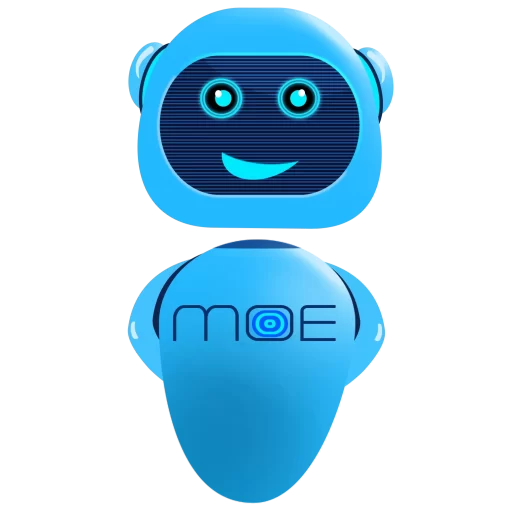Welcome to our blog on chatbot design! In today’s digital world, chatbots have become an integral part of our online experiences, revolutionizing the way we interact with technology. From customer support to virtual assistants, chatbots have proven to be efficient and convenient for users. However, the key to a successful chatbot lies in its design, ensuring a seamless user experience and engaging conversations. In this article, we will delve into the foundations of effective chatbot design, covering UI design, app design, database design, bot design, and chatbot flow design. Let’s dive in!
Chatbot UI Design: Enhancing Interactions and User Engagement
The user interface (UI) of a chatbot plays a crucial role in creating an engaging and user-friendly experience. A well-designed UI goes beyond aesthetics and focuses on intuitiveness, clarity, and easy navigation.
To begin with, it is essential to pay attention to the typography, color schemes, and layout. The choice of typography should be clear and legible, ensuring that users can easily read and understand the bot’s responses. When it comes to color schemes, it is important to strike a balance between visually appealing tones and colors that do not strain the user’s eyes. The layout of the chatbot should be intuitive, enabling users to navigate effortlessly and find the information they need.
Further, effective visual elements such as icons and images can significantly enhance user interactions. Utilizing icons that represent different actions or functionalities can make the chatbot more intuitive. Additionally, strategically placed images can enhance the overall user experience and make the conversation more engaging and interactive.
Chatbot App Design: Creating Purposeful Applications for Optimal User Experience
Designing a chatbot app that meets the specific needs of the users is paramount to ensure optimal user experience. A purposeful chatbot app should provide essential features and functionalities that make interactions seamless and efficient.
When developing a chatbot app, it is crucial to consider the target audience and their requirements. This understanding enables the design team to implement relevant features that enhance user satisfaction. Additionally, exploring different chatbot development platforms and frameworks can streamline the app development process and make it more efficient.
One key aspect of chatbot app design is adopting a user-centric approach. This involves conducting user research and understanding the pain points and preferences of the target audience. By placing the needs of the users at the core of the design process, chatbot apps can deliver personalized experiences and cater to individual requirements.
Chatbot Database Design: Nurturing Intelligent Conversations
Behind every successful chatbot lies a well-structured and robust database. The database design plays a critical role in ensuring intelligent conversations and accurate responses to user queries.
It is important to design and implement a chatbot database that can efficiently process and retrieve data. Choosing appropriate database management systems, such as relational databases or NoSQL databases, based on the specific requirements of the chatbot is crucial. Additionally, ensuring data security and privacy should be a top priority during the database design process.
Designing Bots: Approaches and Frameworks
Designing chatbots involves adopting the right approaches and utilizing the appropriate frameworks. Several design methodologies can guide the development process, enabling the creation of chatbots that meet and exceed user expectations.
Understanding the principles of conversational design is key to designing effective chatbots. Conversational design focuses on creating human-like conversational experiences, enabling chatbots to engage in realistic discussions with users. Natural Language Processing (NLP) techniques play a crucial role in achieving this, as they enable chatbots to understand and respond to user queries in a more intelligent manner.
Best Practices for Effective Chatbot Flow Design
The flow of a chatbot interaction determines the smoothness of the conversation and the overall user experience. Implementing logical and user-friendly chatbot flows is essential to ensure that users can easily navigate through the conversation and find the information they need.
One important consideration when designing chatbot flows is striking a balance between the chatbot’s capabilities and limitations. While it is important to create a bot that can handle a wide range of user queries, it is equally important to manage user expectations in terms of what the chatbot can and cannot do. Communicating the bot’s limitations upfront can help avoid potential frustrations and misunderstandings.
User testing and feedback iterations are crucial for improving chatbot flow design. Conducting usability tests with real users and gathering their feedback helps identify pain points and areas of improvement. Iteratively refining the chatbot flow based on user feedback ensures a more user-centric and efficient design.
Line Chatbot Designer: Enabling Seamless Interaction on a Prominent Platform
Line chatbots have gained significant popularity, offering unique features and capabilities for seamless interactions. In designing Line chatbots, it is important to leverage the platform’s resources and tools to create engaging and satisfying user experiences.
Line provides developers with a range of APIs and SDKs, enabling integration with various Line services. Utilizing these resources can enhance the functionality and performance of the chatbot. Additionally, Line’s rich media support allows for the incorporation of images, videos, and other media types to create more interactive and visually appealing conversations
Embracing the Potential of Chatbot Design
As chatbots continue to evolve, the significance of design in creating engaging and user-friendly experiences cannot be underestimated. From focusing on Moe Chatbot to database design, and from bot design methodologies to chatbot flow design, each aspect plays a vital role in shaping the overall user experience.
By adhering to best practices, leveraging appropriate frameworks, and embracing user-centric design approaches, chatbot designers can create bots that not only meet user expectations but also exceed them. With the potential for human-like conversations and intelligent interactions, chatbots have the power to revolutionize the way we interact with technology. So, let’s continue exploring, innovating, and designing chatbots that truly enhance our digital experiences!

